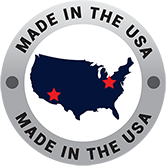In the glass manufacturing industry, accurate and reliable temperature measurement is vital to ensuring product consistency and prolonging furnace life. Cleveland Electric Laboratories’ custom thermocouples and industrial thermocouples are engineered to withstand the corrosive, high-temperature conditions of glass melting and forming, delivering real-time data that helps operators optimize batch quality and minimize downtime.
Glass Industry Products Include
- Platinum Thimble Design Thermocouples – Bottom & sidewall immersion probes for direct contact with molten glass
- Glass Tank Thermocouples – Sheath-mounted assemblies for side-wall and bottom-port installation
- Glass Level Probes – Dual-function sensors combining level-sensing and temperature measurement
- NIST-Traceable Certifications – Full, in-house ISO-accredited calibration for audit-ready accuracy
How Thermocouples Work in Glass Manufacturing
Strategically installed in side-wall ports, bottom outlets, or directly immersed into molten glass, CEL’s platinum-thimble and sheath-mounted probes demonstrate some of the most demanding thermocouple applications in the industry. Designed to withstand extreme thermal environments (up to 1 600 °C), these probes convert heat into precise millivolt signals that feed your control system, enabling continuous melt temperature monitoring and automated adjustments to maintain ideal viscosity and prevent overheating.
Why Choose CEL Thermocouples for Glass Manufacturing
- End-to-End Quality & Traceability: Custom-designed in our ISO-accredited lab, with NIST-traceable certification, these probes deliver precise, drift-free readings.
- Built to Withstand Extreme Conditions: High-purity platinum and specialty alloys resist oxidation, corrosion, and thermal cycling—minimizing maintenance and extending service life.
- Optimize Yield & Safety: Real-time temperature and level data ensure uniform melt viscosity and color, reduce downtime, and prevent thermal runaway in your furnace.



